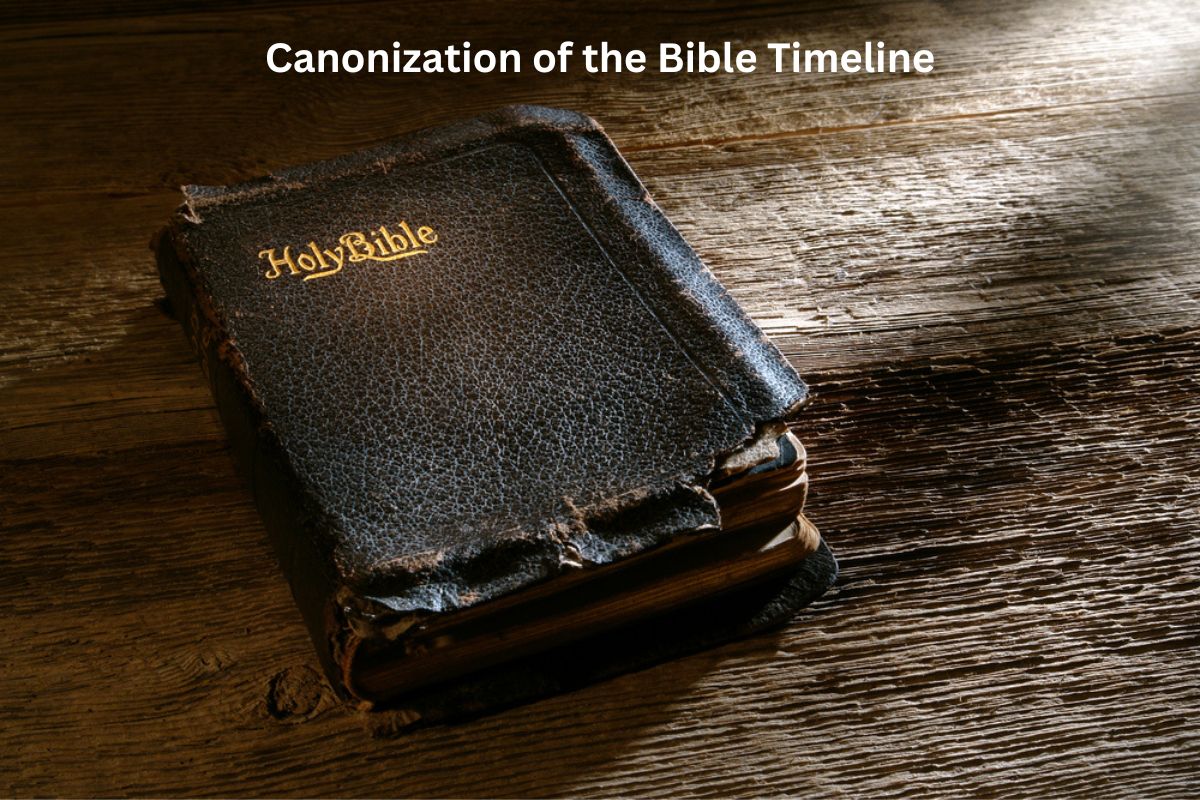The canonization of the Bible is the process of selecting and recognizing the texts that make up the Christian Bible.
This timeline covers the period from the 1st century CE to the late 4th to 5th century CE, highlighting key events in the formation of the New Testament canon.
It should be noted that this process was not uniform across all Christian communities, and variations existed in the acceptance of certain texts.
The timeline focuses on the evolution of Christian scriptures, leading to their standardization.
| Century CE | Events |
|---|---|
| 1st Century CE | The teachings of Jesus and the writings of his apostles began to circulate among early Christian communities. |
| 2nd Century CE | Various Christian texts, including the Gospels, Pauline epistles, and other writings, were composed and shared among different Christian communities. Marcion compiled his own canon of Scripture. |
| 3rd Century CE | Origen listed many of the books that would later become part of the New Testament canon. Different Christian communities had their own collections of writings. |
| 4th Century CE | The First Council of Nicaea was held in 325 CE but did not specifically address the canon of Scripture. Athanasius listed the 27 books of the New Testament. Synods in the West confirmed the same list. |
| Late 4th to 5th Century CE | Over time, the lists of authoritative texts became widely accepted in the Christian East and West. |
Timeline of the Canonization of the Bible
1st Century CE:
During the 1st century CE, the early Christian communities were primarily focused on the teachings of Jesus Christ and the oral transmission of his message.
Jesus’ disciples and apostles were witnesses to his teachings, and they began sharing these teachings with others.
Also Read: Miracles of Jesus in Chronological Order
Written records of Jesus’ life and teachings, including the earliest Gospel accounts, began to emerge during this time.

2nd Century CE:
The 2nd century CE saw significant developments in the formation of Christian texts and the emergence of various Christian communities.
Christian Texts:
Various Christian writings started to appear, including the four Gospels: Matthew, Mark, Luke, and John. These Gospels provided accounts of Jesus’ life, teachings, death, and resurrection.
In addition to the Gospels, other writings, such as the Pauline epistles (letters written by the Apostle Paul to different Christian communities), began to circulate.
Marcion’s Canon:
Around the middle of the 2nd century, Marcion, a notable figure in early Christianity, compiled his own canon of Christian scriptures. This canon, known as the “Marcionite Canon,” included a modified version of Luke’s Gospel and a selection of Paul’s letters.
Also Read: Timeline of Biblical Events
Marcion’s actions spurred discussions and debates among early Christian leaders about which texts should be considered authoritative.
Local Variations:
It’s important to note that during this time, different Christian communities had their own collections of writings that they considered authoritative. These collections varied from place to place, reflecting regional differences in beliefs and practices.
Absence of a Universal Canon:
Importantly, in the 2nd century, there was no universally agreed-upon canon of Scripture across all Christian communities. The process of canonization was still in its early stages, and different groups held different views on which texts were divinely inspired and should be considered part of the Christian Bible.

3rd Century CE:
During the 3rd century CE, the process of canonization continued to develop as different Christian leaders and communities debated the inclusion of various texts into the New Testament canon.
Origen’s List:
Origen, an influential Christian theologian, compiled a list of books that he considered authoritative. His list included many of the texts that would eventually become part of the New Testament. However, it also included some texts that were not included in the final canon, such as the Shepherd of Hermas and the Epistle of Barnabas.
Diverse Collections:
Various Christian communities had their own diverse collections of writings, reflecting regional and theological differences. Some communities accepted texts that others did not, further contributing to the lack of a standardized canon.
4th Century CE:
The 4th century CE marked significant developments in the process of canonization:
First Council of Nicaea (325 CE):
The First Council of Nicaea was convened primarily to address theological issues, particularly the Arian controversy. While the council did not specifically address the canon of Scripture, it did bring together Christian leaders from various regions, fostering discussions about which texts should be considered authoritative.
Athanasius’ List:
Athanasius, the influential bishop of Alexandria, wrote an Easter letter in 367 CE in which he listed the 27 books of the New Testament that are now widely accepted by most Christian denominations. His list aligns closely with the modern New Testament.
Synods in the West:
In the Western Christian tradition, synods held in Hippo (393 CE) and Carthage (397 CE) confirmed the same list of 27 New Testament books that Athanasius had proposed. These synods played a crucial role in affirming the New Testament canon in the West.

Late 4th to 5th Century CE:
Over the late 4th and into the 5th century CE, the lists of authoritative texts became increasingly accepted and recognized in both the Christian East and West.
Acceptance of the Canon:
By this time, the majority of Christian communities had come to accept the list of 27 books that make up the New Testament canon. While there were some lingering debates and variations, the canonization process had largely reached its conclusion.
Standardized Canon:
The New Testament canon, as we know it today, was largely standardized during this period, and it included the four Gospels, the Acts of the Apostles, the Pauline epistles, the General epistles (including James, Peter, John, and Jude), and the Book of Revelation.
It’s important to note that the process of canonization was not uniform across all Christian communities, and there were variations in the acceptance of certain books among different groups. Additionally, the canonization of the Old Testament (Hebrew Bible) followed a different timeline and process, and it varies among different religious traditions (e.g., Jewish, Catholic, Protestant).
